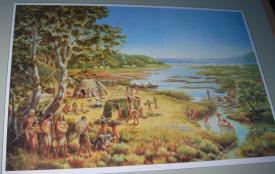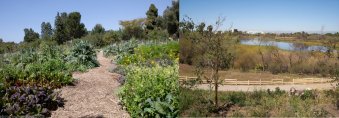| About Us | Contact Us | Calendar | Publish | RSS |
|---|
|
Features • latest news • best of news • syndication • commentary Feature Categories IMC Network:
Original Citieswww.indymedia.org africa: ambazonia canarias estrecho / madiaq kenya nigeria south africa canada: hamilton london, ontario maritimes montreal ontario ottawa quebec thunder bay vancouver victoria windsor winnipeg east asia: burma jakarta japan korea manila qc europe: abruzzo alacant andorra antwerpen armenia athens austria barcelona belarus belgium belgrade bristol brussels bulgaria calabria croatia cyprus emilia-romagna estrecho / madiaq euskal herria galiza germany grenoble hungary ireland istanbul italy la plana liege liguria lille linksunten lombardia london madrid malta marseille nantes napoli netherlands nice northern england norway oost-vlaanderen paris/Île-de-france patras piemonte poland portugal roma romania russia saint-petersburg scotland sverige switzerland thessaloniki torun toscana toulouse ukraine united kingdom valencia latin america: argentina bolivia chiapas chile chile sur cmi brasil colombia ecuador mexico peru puerto rico qollasuyu rosario santiago tijuana uruguay valparaiso venezuela venezuela oceania: adelaide aotearoa brisbane burma darwin jakarta manila melbourne perth qc sydney south asia: india mumbai united states: arizona arkansas asheville atlanta austin baltimore big muddy binghamton boston buffalo charlottesville chicago cleveland colorado columbus dc hawaii houston hudson mohawk kansas city la madison maine miami michigan milwaukee minneapolis/st. paul new hampshire new jersey new mexico new orleans north carolina north texas nyc oklahoma philadelphia pittsburgh portland richmond rochester rogue valley saint louis san diego san francisco san francisco bay area santa barbara santa cruz, ca sarasota seattle tampa bay tennessee urbana-champaign vermont western mass worcester west asia: armenia beirut israel palestine process: fbi/legal updates mailing lists process & imc docs tech volunteer projects: print radio satellite tv video regions: oceania united states topics: biotechSurviving Citieswww.indymedia.org africa: canada: quebec east asia: japan europe: athens barcelona belgium bristol brussels cyprus germany grenoble ireland istanbul lille linksunten nantes netherlands norway portugal united kingdom latin america: argentina cmi brasil rosario oceania: aotearoa united states: austin big muddy binghamton boston chicago columbus la michigan nyc portland rochester saint louis san diego san francisco bay area santa cruz, ca tennessee urbana-champaign worcester west asia: palestine process: fbi/legal updates process & imc docs projects: radio satellite tv |
Indigenous Rights and Issues:
1 next page |
single feature archives |
weekly archives
02/01/2012
"The Kawaiisu Tribe of Tejon thanks Secretary Ken Salazar for 'Reaffirming' the Tribe to the list of Federally Recognized Tribes in the United States. 'Reaffirming of Recognition,' means that Congress and the President of the United States recognize the Tribe through the Treaty, because the Treaty represents prior Federal Recognition. The United States now is back in compliance with the Treaty, except for the Tejon Reservation and Graves issues. . . . They have been fighting a legal case for two years in California Federal Court, docket number 1:09-cv-01977, to stop development on their Indian Reservation at the Tejon Ranch near Los Angeles, that gives the corporation permission to unearth the burial remains and spiritual burial objects of thousands of their ancestors that died on the reservation. The timing of regaining recognition, while awaiting a ruling on the Federal Case is an unexpected gift that the Tribe embraces with gratitude. . . ."
More: Tribe Thanks Secretary Salazar For Righting Wrongs Of The Past by David Laughing Horse Robinson The Kawaiisu people and legal history of land (by Kernvillekate): More Information and videos: Kawaiisu Tribe of the Tejon (Blogspot) Update (12-10-16): Disastrous New City at Tejon Ranch Approved for Kern County from indybay.org Update (July 2018): A guest on KPFK's American Indian Airwaves described a huge new city-sized sprawl development at Highway 5 and State Route 138 called Centennial, which will destroy one of the last grasslands in CA, endanger the wildlife, and increase traffic even more. Tejon Ranch is the developer behind it. The discussion starts about 17 minutes into the show (second segment). American Indian Airwaves Available for 90 days.
04/23/2004
The Eco Maya Festival at Barnsdall Park this weekend melds the sometimes divergent social movements for cultural preservation, ecological respect, and indigenous heritage. The Eco Maya project is working on a cohousing community called the Eco Maya village that combines the idea of the Eco Village with indigenous cultural preservation, for the living indigenous among us. (A community action statement from one of the organizers.) As the summer approaches, numerous free festivals take over the parks of Los Angeles. Among the highlights are the Corn Festival in Highland Park, the Lotus festival at Echo Park, the Sol Festival. Below is a mural by Frank Romero titled Festival of Masks, depicting the annual Festival of Masks on Wilshire (which, unfortunately, is not happening this year). From the USC Metro Art Archives.
The last remaining Tongva/Gabrielino cemetary in LA County is being excavated and moved to make room for a creek, that, in turn, is being diverted to allow the development of Playa Vista, the infamous housing development on the Ballona Wetlands near Playa del Rey.
The archeologists and a crew of 70 people are removing human remains and putting them into boxes, and shipping them to UCSB for later "study." The grave goods and funerary objects are put in other boxes to be "studied" in other places. Separating these remains from funerary objects is illegal. Over 120 graves have been found, and the number keeps increasing. The State Historic Preservation Officer has the power to stop the excavation and development, but has thus far remained silent. Weekly vigils at the site are held from 12:00 noon to 5:00 p.m. at the Loyola Marymount University entrance, at Lincoln and 83rd St. Another vigil is held from 7:00 to 9:00 p.m. at the corner of Bienvenida and Mountain Shadow.
In her first solo exhibit, photographer (and contributor to LA IndyMedia) Isabel Avila explores the dual identities of Native American and Mexican American cultures, emphasizing people active in their communities. Avila's photographs, taken over the last few years, are complimented by video discussions with the photo subjects and other people, including Gloria Arellanes, one of the early Brown Berets and member of the Tongva community. (Excerpts of these talks are included in the article below.) The free exhibit is currently at the Vincent Price Museum through December 8. It will then then relocate to Rancho Cucamonga's Wignall Museum of Contemporary Art and run from January 22 to March 16, 2013. (Location details within the article.)
"Through video dialogue and portraiture, the museum goers are not just given facts to go away with but are also left to make their own connections with this subject matter in their own lives," Avila explained. Article: Isabel Avila's "Parallel Worlds" at the Vincent Price Art Museum by Ross Plesset, photos by Isabel Avila Jacob Gutierrez, a Tongva, has a lot on his plate right now. The last science center in the LA Unified School District is "on the chopping block" due to budget cuts in education. (LAUSD originally had six.) This facility has been a resource for everyone in the community, especially children. It contains several gardens, consisting of over 80 native plants and fruit trees. Native wildlife is drawn there, including blue butterflies. There are also over 150 animals that children can visit, all rescues. Oftentimes they have been confiscated by the U.S. Government at the southern border and would have been killed were it not for the Center.
Just up the street is the site of Shwaanga (Ken Malloy Regional Park), one of the largest Tongva villages in pre-Spanish times, a site which has been suffering from pollution in recent centuries. In pre-European times, people would travel by boat from islands including Pimu (Catalina Island) and numerous inland communities via canoelike boats plying rivers, as well as different parts of the California coast. Among other things, Shwaanga was known for its fresh water. Now the water is heavily polluted and needs to be cleaned up. Story and photos: San Pedro: Science Center Endangered/Tongva Village Site Revitalization by R. Plesset, Science Center photos by Isabel Avila Indigenous Rights and Issues: 1 next page | single feature archives | weekly archives |





 Isabel Avila's "Parallel Worlds" at the Vincent Price Art Museum
Isabel Avila's "Parallel Worlds" at the Vincent Price Art Museum San Pedro: Science Center Endangered and Tongva Village Site Needs Restoration
San Pedro: Science Center Endangered and Tongva Village Site Needs Restoration